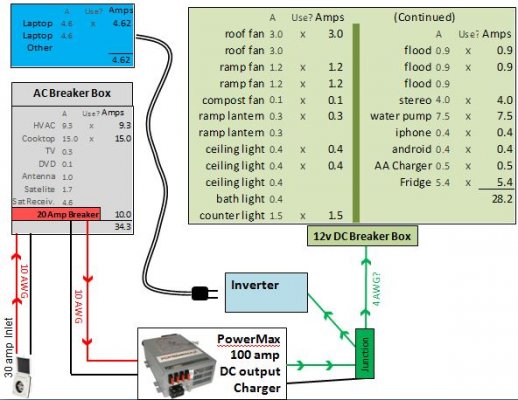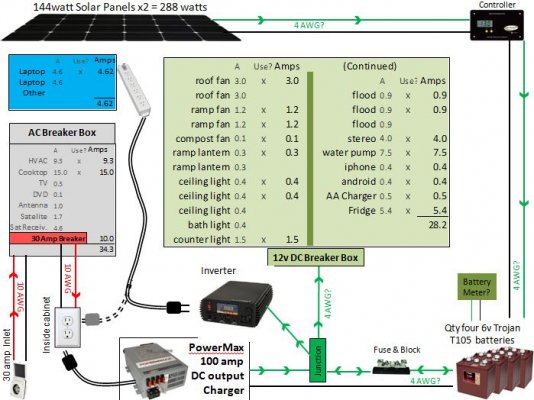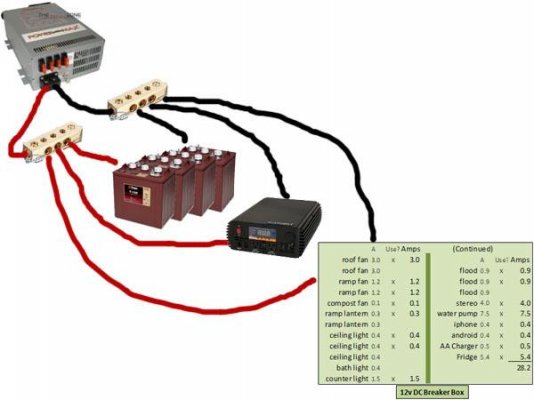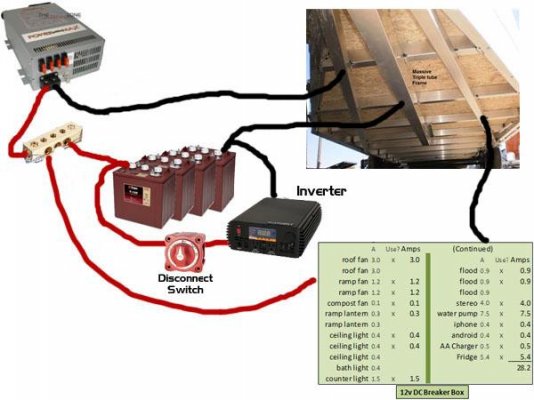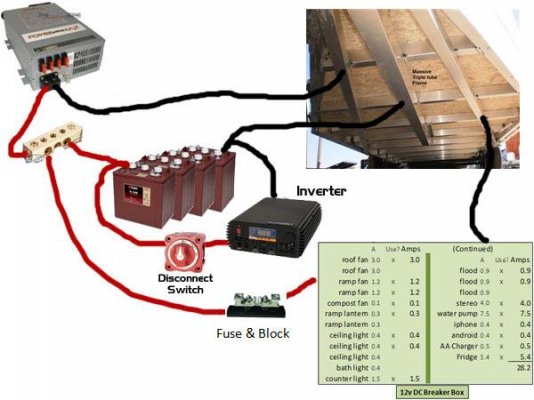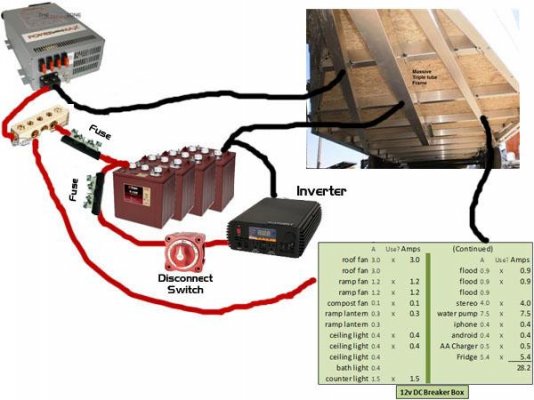I have done a little more research and made 2 small changes:
1) I decided to go the 6v (Trojan 105) in series route rather than the Duracell 12v 155 Ah (http://www.samsclub.com/sams/duracell-golf-car-battery-group-size-gc12v/prod3870120.ip?navAction=push). I simply made that call based on some comments on this board and the popularity of it. The 12v offers A LOT more Ah, but I will go with the proven winner.
2) Made the red breaker going to my charger a 20 amp instead of a 30 amp. The Powermax charger I chose draws a max of 13 amps.
My new question, and I think I know the answer, is what if I delay my purchase of batteries, solar, solar controller, etc and just use shore power this year? This will be my family's first year at campsites, and I believe we will not be venturing away from shore power. Seems like this would work fine; then I could make the large investment in the other items next year.
Do you guys forsee any issues when my drawing looks like this.
1) I decided to go the 6v (Trojan 105) in series route rather than the Duracell 12v 155 Ah (http://www.samsclub.com/sams/duracell-golf-car-battery-group-size-gc12v/prod3870120.ip?navAction=push). I simply made that call based on some comments on this board and the popularity of it. The 12v offers A LOT more Ah, but I will go with the proven winner.
2) Made the red breaker going to my charger a 20 amp instead of a 30 amp. The Powermax charger I chose draws a max of 13 amps.
My new question, and I think I know the answer, is what if I delay my purchase of batteries, solar, solar controller, etc and just use shore power this year? This will be my family's first year at campsites, and I believe we will not be venturing away from shore power. Seems like this would work fine; then I could make the large investment in the other items next year.
Do you guys forsee any issues when my drawing looks like this.

